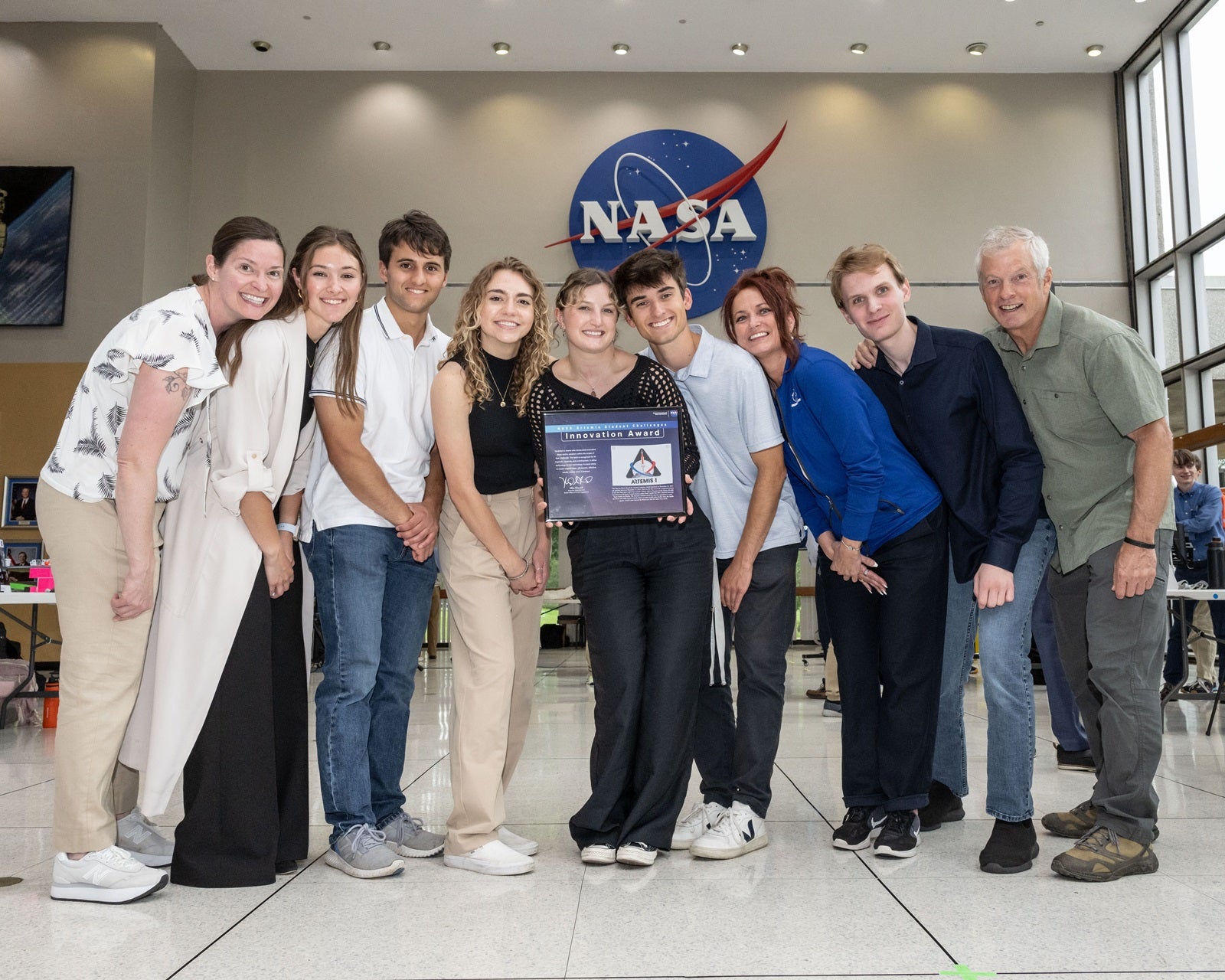
In the summer of 2024, Boise State students competed to develop new technologies for NASA’s Artemis missions, which will return astronauts to the moon in coming years.
A team of students from the College of Engineering and the College of Arts and Sciences designed and built tools for the Micro-g NExT challenge. They brought their designs to the Johnson Space Center in Houston, Texas, for live testing in front of NASA judges. The team won the Innovation Award for their work.
Bringing astronauts home safely is just as critical to landing on the moon. Among the four challenges to choose from in the Micro-g NExT competition, Boise State’s team focused on safety. They undertook a challenge to design and build a system that could help search and rescue crews bring astronauts home safely.
Like Apollo before it, Artemis will return astronauts to Earth in a capsule called Orion, which will descend swiftly through the atmosphere before a parachute-aided ocean landing. Once the capsule has landed, search and rescue crews on scene will swoop in to retrieve the astronauts.
However, finding the capsule is no easy task. Although search and rescue crews know roughly where Orion will land, they must give the capsule a wide berth as it descends. Otherwise jettisoned objects or the capsule itself could threaten anyone in the area.
Search and rescue is further hampered by uncertain ocean conditions. Rough chop on the sea can make it hard to spot the relatively small capsule, especially since search and rescue vehicles must keep their distance until Orion splashes down.
The interdisciplinary Boise State team combined their expertise in physics, computer science and engineering to create the Locating Camera for Aquatic Recovery, or LOCATR, system. Their solution involved a webcam, a small computer, a computer vision model and a user interface to identify the Orion capsule and other objects of interest. With LOCATR’s help, search and rescue crews could quickly identify Orion and rush to the aid of the returning astronauts.
The team brought their solution to NASA’s Neutral Buoyancy Laboratory for live testing in front of NASA researchers and came home with the Innovation Award. The judges were especially impressed with the LOCATR’s quick and intuitive user experience.
The team credits each other and faculty members Steve Swanson and Sarah Haight for their success. They also used the Boise State Rec Center pool to test their design before heading to Houston.
Members of the Micro-g NExT team include:
- Ryan Somalis, Physics
- Hailey Stubbers, Physics
- Alex Smith, Computer Systems Engineering
- Brooke Matthews, Computer Science
- Leah Rogers, Physics
- Torben Vraciu, Electrical Engineering
- Doreen Williams, Physics